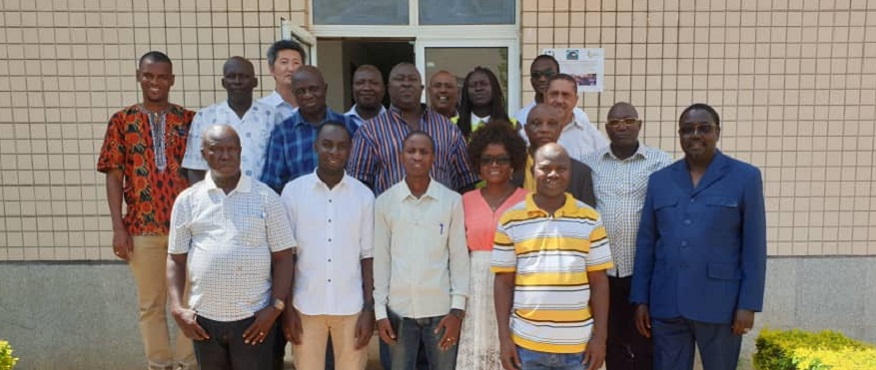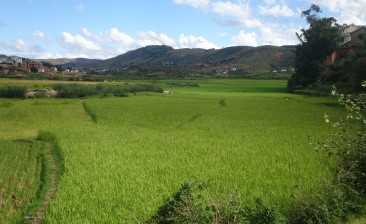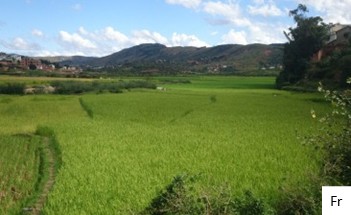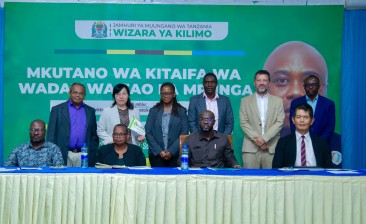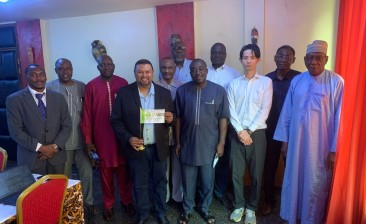Guinea-Bissau, September 2019
First Working Week on the revision of the National Rice Development Strategy in Guinea Bissau
Rice occupies a prominent place in the dietary habits of Bissau-Guineans. In fact, the share of rice in food intake is 75%. With a population of 1,500,000 and per capita consumption of 130 Kg, Guinea-Bissau is one of the largest rice consumers in the West African sub-region.
Despite the strategic importance of rice, domestic rice production has not matched the actual demand of the population. Against an estimated total demand of about 200,886 tons per year, the domestic production remains limited to 111,096 tons per year. To fill the gap, the country must import rice at an average cost of nearly 36 million US dollars per year.
The low level of rice production is mainly due to the poor performance of the rice value chain. The major challenges include, among others, low productivity of production systems, high level of post-harvest losses, inefficient rice markets, and weak linkages among value chain actors.
Although the Government of Guinea-Bissau had initially targeted to achieve self-sufficiency by 2020 and to release a surplus by 2025, the current outputs show that these objectives are far from being achieved. Hence it is necessary to review the progress and design a new and yet realistic rice development strategy.
It is in this context that the first working week was organized between the 09th and 13th of September 2019. The purpose was to launch the process of revising the national rice development strategy (NRDS).
The workshop was chaired by the Director OF Cabinet of the Ministry of Agriculture and attended by several main actors involved in the rice value chain. The objectives of the workshop were to (a) formally launch CARD’s support activities in Guinea Bissau and (b) initiate the development of a new NRDS.
Key outputs / Results
The participants made a diagnosis of the rice sector and reflected on the different scenarios that are to be put in place to enable the country to achieve its goal of self-sufficiency in rice.
The participants agreed that as a first step, the actions that are to be implemented by the NRDS would have to satisfy the local demand through: i) increase in domestic rice production and productivity and ii) improvement of resilience of the production systems. It was agreed that the strategic actions will have to contribute to the intensification and modernization of the production systems through rehabilitation and creation of irrigation schemes, improvement of the access to certified seed, fertilizer, agricultural machineries and strengthening of the technical capacities of producers. The trend towards food self-sufficiency in Guinea-Bissau could follow the following path of domestic production volumes in order to meet the rice needs of the country by 2030:
- 2020 : 200,000 tons of rice
- 2025: 345,000 tons of rice
- 2030: 500,000 tons of rice
By the end of the NRDS period (2030), 500,000 tons of paddy rice will have to be produced, which corresponds to the expected demand. Thus, in 2030 the rice self-sufficiency can be achieved. This objective, which may seem ambitious, is possible if the political will is confirmed and if all the Donors, the Farmers Organizations and the NGOs involved join the efforts of the Ministry in charge of Agriculture.
It is expected that the development of the NRDS will continue and that the document will be finalized by June 2020. To this end, after receiving technical comments, a second working week will be organized for the determination of the costs and the elaboration of the action plan under the NRDS.
